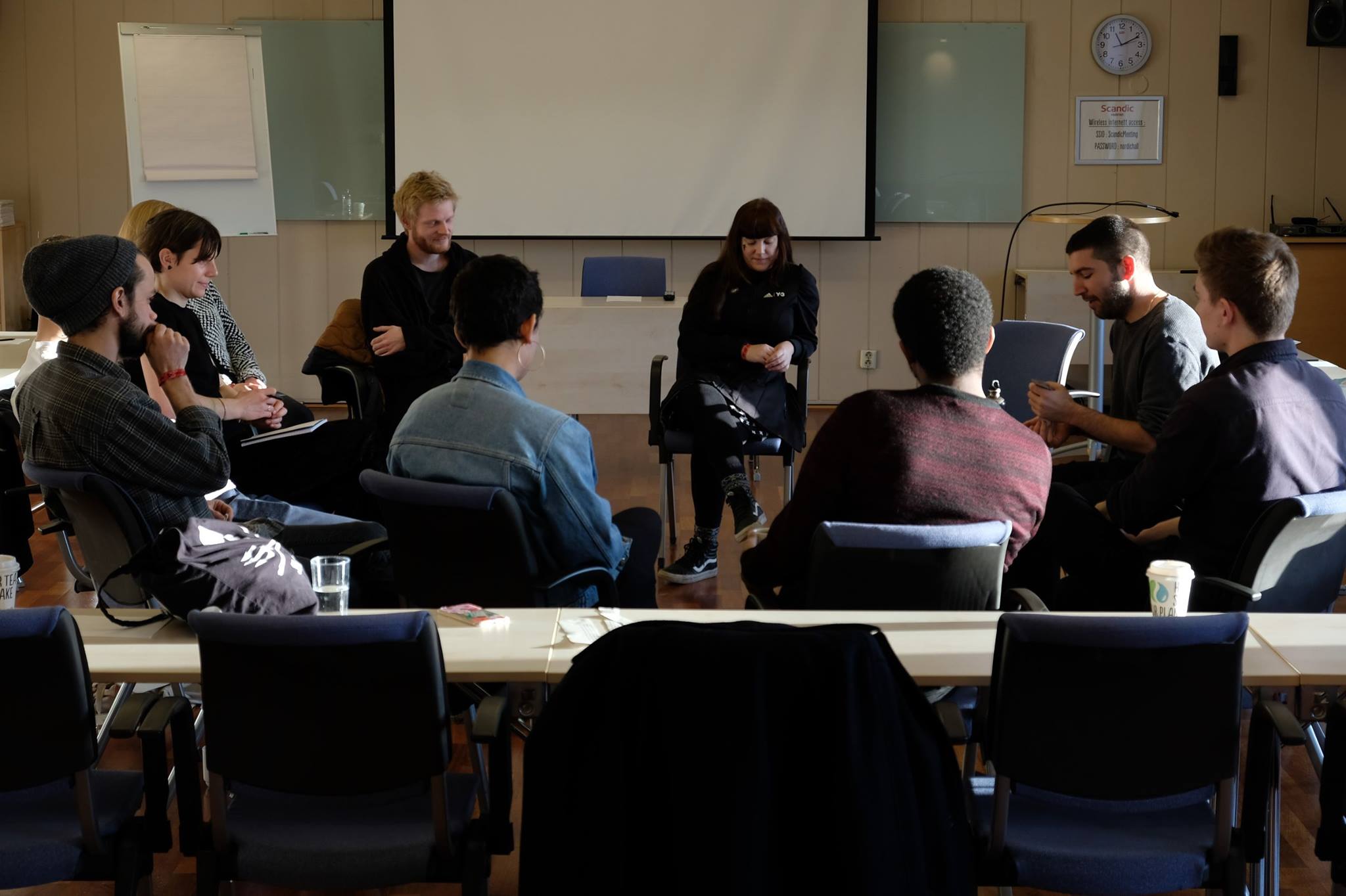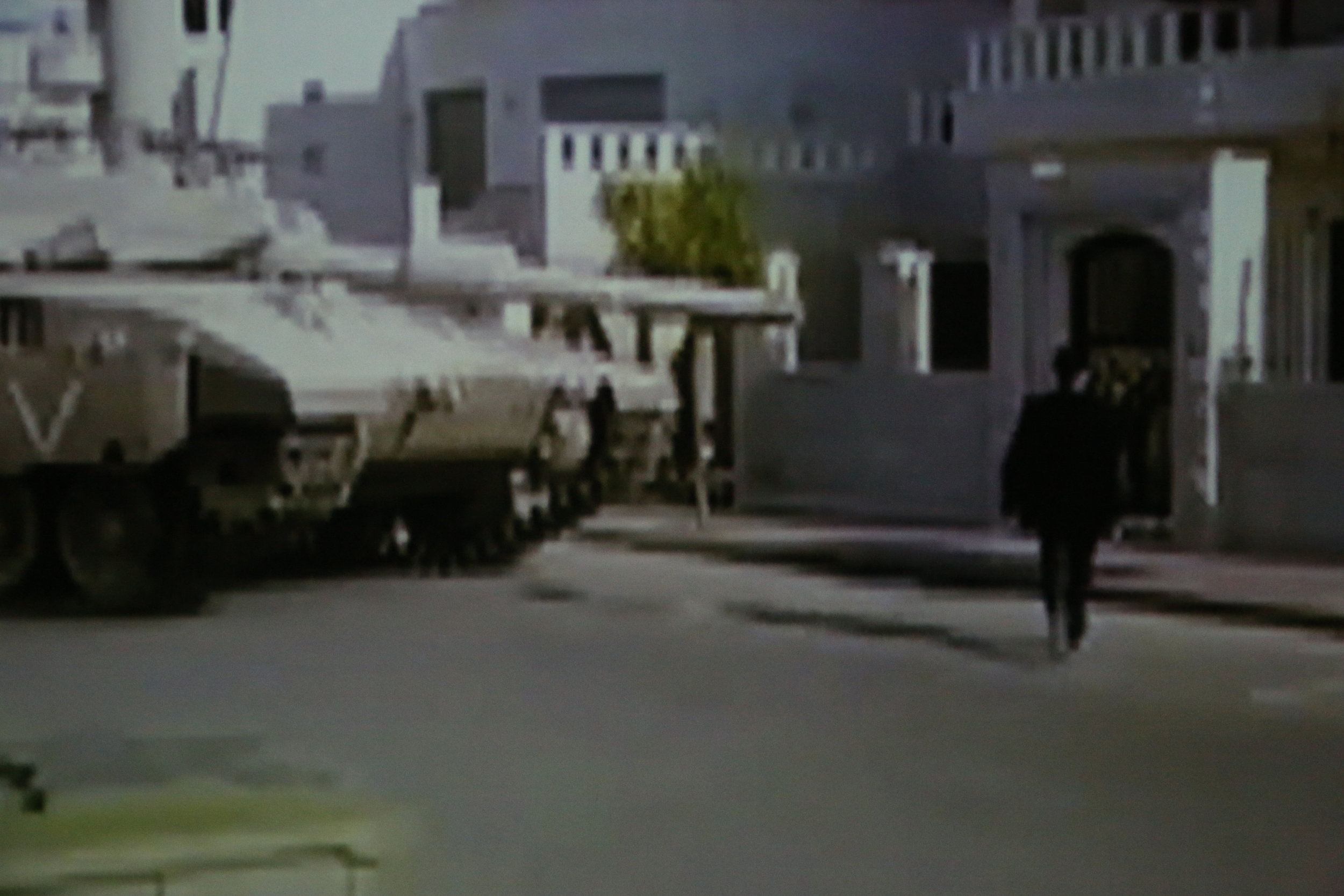Harstad Kino
Kr 110,-
THESE CAMERAS STAY ON - KURATERT PROGRAM OG PANEL//CURATED PROGRAM AND PANEL
Presentasjon av kurator Anastasia Patsey+filmklipp+panel med Kjetil Jacobsen og Jon
Nordenson, om sosiale medier og bevegelige bilders rolle i revolusjon, med filmer fra
Egypt, Syria, Iran og Libanon. //Presentation by curator Anastasia Patsey+filmclips+panel with Kjetil Jacobsen and Jon Nordenson, about the role of social media and moving image´s role in revolution, with film screenings from Egypt, Syria, Iran and Libanon.
Se lenger ned for å kjøpe billett til enkeltvisninger av utvalgte filmer. //Scroll further down to buy tickets for the separate screenings of Rabih Mroué, The Pixelated Revolution (2012) Duration: 60’00”, Bani Khoshnoudi, The Silent Majority Speaks (Egypt/Lebanon, 2014) Duration: 94’00" and Lara Baladi, Alone, Together... In Media Res (2012) Duration: 42’00”.
Kuratortekst av Anastasia Patsey (på engelsk)
This screening program dedicated to the 100th anniversary of the October
Revolution initiates a dialogue about the complex relationships between the art of the
moving image and the phenomenon of Revolution in the modern perspective. It is
neither a historical chronicle, nor an illustrative compilation, but a research on the
power of the image, the new forms of collaboration between the artist and the
anonymous operator, the new language and toolkits of civil resistance of the 21st
century.
In March 2010 Jafar Panahi — one of the most influential filmmakers of the Iranian
New Wave — was arrested for participating in anti-governmental protests. He
received a six-year jail sentence and a 20-year prohibition of filmmaking and
interviews. During his home-arrest Jafar Panahi created “This Is Not a Film” (2011)
— a documentary in a form of a video diary. In one scene his friend — documentarist
Moijtaba Mirtahmasb — says: “Listen, Jafar. What matters is that this is documented.
It matters that these cameras stay on.”
The moving image rather than the printed words became one of the main weapons
of civil resistance during various revolutionary movements in the former Soviet
republics, the Balkans and the Middle East in the 2000s. The image of a protestor
holding up a mobile phone and documenting everything that is happening around to
share original footage online turned out to be iconic especially for the events of the
Arab Spring. Social media and smartphones enabled a massive engagement in
political uprisings of the 21st century. While adding a new dimension to the political
arena, they reinvent social activism as such. Together, protestors created vast media
archives and transmitted an independent, unfiltered vision of the revolutions.
Throughout the human history the phenomenon of revolution has been presented as
a liberating and empowering event. Many people who participate in revolutionary
movements describe these moments as the best times of their lives when almost
anything is possible. Nowadays the image of the revolution is often appropriated and
instrumentalised by mass culture. It is presented to the consumer in close connection
to such values as freedom, unity, solidarity, progress, expression. The heritage of the
most famous revolutions — e.g. the French Revolution or the October Revolution —
is transformed into a brand, a product that can be consumed worldwide in many
different ways and formats. The dramatic and the tragical of the Revolution is left
behind and supplanted by romance, euphoria and poetry by the apparatus of
historical memory-making.
Revolutionary events happening today are difficult to compare to the ones well know
to us from the past century. They have different mechanics, follow different patterns
and use different instruments. Besides the socio-political situation, the main
distinctive aspect of the revolutions taking place in the 21st century is the way they
are communicated. In 2017, one hundred years after the “Red October”, the
audience is invited to take part in a dialogue about the complex relationships
between the moving image and the phenomenon of Revolution. How do they
interact, affect and engage each other? What language do they speak? Where are
the borders between artistic work, documentation and propaganda? These are some
questions that the discussion will be built around.
In the framework of four sessions the screening program “These Cameras Stay On”
presents works by artists and filmmakers that are based on authentic nonprofessional footage created by participants of revolutionary events and shared on social media platforms. In opposition to professional documentaries and other films, many of which were released in cinemas, the selected works are nor a historical chronicle of the revolutions, neither an illustrative compilation. “These Cameras Stay On” presents examples of collaboration between the artist and the anonymous operator, the dual character of the protestor as agent and object of change, the new languages and toolkits of civil resistance.
Filmklipp fra// Film clips from:
Rabih Mroué, The Pixelated Revolution (2012) Duration: 60’00”
Khaled Hafez, The Video Diaries (2011) Duration: 06’19" (Hele filmen)
Lara Baladi, Alone, Together... In Media Res (2012) Duration: 42’00”
Bani Khoshnoudi, The Silent Majority Speaks (2014) Duration: 94’00"
Khaled Hafez, The Video Diaries (2011) Duration: 06’19"











